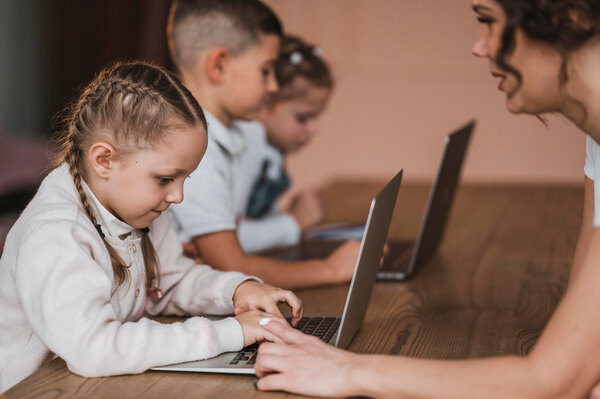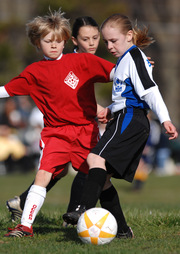The Importance of Age-appropriate Online Activities for Children’s Development
Playing is vital for children, which can be in the form of physical games or even online. What is essential is that children play appropriate games for their age. Currently, many children prefer online games to play with their friends closely, so it is important to do online activities that are appropriate for their age so that they can enjoy the benefits of playing.
We all know that when children play online games, we should pay attention to the safety of the game space. Still, another critical issue is that children’s online activities also affect their development.
It is good to know that online activities suitable for children’s age will make children have fun, their creativity will flourish, their imagination will intensify, and their skills and abilities will grow.
Online games and activities have different age groups, so parents can prepare matches suitable for their child’s age and provide them to their children.
So far, we have found that online activities suitable for children’s age have important effects on children’s growth and creativity.
In this article, we discuss the importance of online activities appropriate to children’s age on their development and examine the most important reasons.
The Benefits of Age-Appropriate Online Activities for Children’s Growth

In this section, we examine some of the most important reasons for the importance of age-appropriate online activities for children.
● Health and Well Being
When choosing online activities for your children, ensure they are suitable for their age because online activities significantly impact their health.
If the activities you choose are for a group older than your child’s age, they may contain heartbreaking scenes unsuitable for the child’s age and therefore have a destructive and negative effect on your child’s health.
But providing an online activity suitable for the child’s age will positively affect the child’s healthy development.
● Increase Children’s Cognitive Skills
Online games and activities can affect their cognitive skills and develop these skills. Therefore, online activities such as online games are not always harmful, and if they are suitable for the age of children, they can help their development.
Research has shown that online activities affect the training and development of children’s cognitive skills, such as problem-solving, reasoning, decision-making, critical thinking, creativity, and memory.
● Fix Children’s Mood
Parents think that all online activities are harmful to children and cause anger and anxiety, which is undeniable. Still, the most important reason for such an incident is that children do activities online, which is unsuitable for their age.
If you, as a parent, provide your children with age-appropriate online activities, these online games can set the children’s mood, relax, enjoy spending time online, and even decrease their anxiety and anger.
● Improve Their Social Skills
Online activities can positively affect children’s social skills and help them learn critical social skills from their peers.
When you choose online activities for your children that are suitable for their age, they will be able to connect with children of the same age, and in this way, they can strengthen their social skills in the childhood environment.
This work even strengthens their creativity, and in this way, they can learn new ways to communicate with others.
● Hand and Eye Coordination
An interesting issue that some parents may not pay attention to is that online activities can create coordination between children’s hands and eyes; when children are busy doing online activities, they mainly use their hands and eyes to follow the objects on the screen during the game, and they have to press buttons with their hands to advance the game.
Such activities strengthen children’s physical and mental skills and increase hand-eye coordination and reaction.
● Improve Their Language Skills
Online activities strengthen children’s language skills. When children do online activities, their abilities, including language skills, are maintained because they gradually learn how to advance the game’s stages.
In addition, when your children do online activities such as watching educational videos at a young age, they can speak faster and make complete sentences. In this way, their verbal skills are also developed.
As a result, they learn what buttons to press and how to go through the steps. For example, they understand what the “Enter” button, “Skip” button, etc. is and how it is written, and in this way, they learn new words and strengthen their language skills.
● They Receive More Information
Another reason for the importance of online activities suitable for children’s age is that it gives children access to a source of different information, and it is helpful if parents monitor these sources of information.
Children learn things that are available to them, for example, they learn something from parents and school, but if parents provide them with age-appropriate online activities, they can access different information and learn new skills.
● Promote Teamwork Skills
Online group activities suitable for your child’s age will strengthen your child’s teamwork skills.
Such online activities make children assume different roles and responsibilities while playing and try to do it in the best way, enabling them to cooperate with others to reach a specific goal. In this way, your children are happy and learn essential skills.
● Improve Multi-Tasking Abilities
Some online activities in which children have to do several tasks at the same time are beneficial because, in this way, it strengthens children’s different skills and improves their multitasking ability.
Multitasking helps your children a lot; this ability is useful for them in adulthood and allows them to have better jobs than their peers.
● It Brings More Fun and Happiness

You may think that only the games and activities in the playground entertain your children and they are only happy in this way.
This idea is wrong, many online activities are fun for children, and they are happy when they are engaged in such activities and games; most importantly, these activities are designed for different ages, which allows parents to use what is suitable for their child’s age.
● Behavioral Influence
Doing age-appropriate online activities for children has many benefits; one of them is that by doing these activities, children learn how to behave according to their age.
In fact, these activities teach them age-appropriate behavior patterns and thus affect your child’s behavior, so the activities you choose for your child must be appropriate for their age.
Conclusion
Remember that the digital world and online activities have become almost ubiquitous, and most parents cannot spend much time playing with their children, so online activities help parents a lot in addition to their benefits on children’s development.
But it should be noted that children’s use of technology and online activities and games should be under parental supervision and have limitations.
In this article, we have comprehensively discussed online activities suitable for children’s age and their importance for children’s development.
We have provided you with the most vital reasons for the importance of online activities, such as online games, on children’s development so that you can use age-appropriate online activities for your children’s development.











